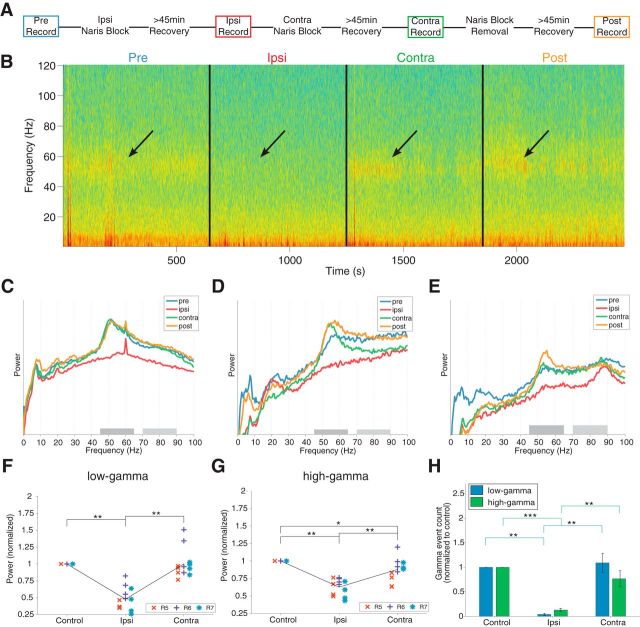Figure 7.
Ipsilateral, but not contralateral, naris occlusion reduces gamma power and event occurrence in the ventral striatum. A, Naris experiment timeline. Ipsilateral and contralateral occlusion order was counterbalanced across days. B, Spectrogram across experimental conditions in a single session. Arrows indicate decrease in gamma-band power during ipsilateral naris occlusion. C–E, Normalized PSDs of representative sessions from each subject (R5, R6, and R7, respectively). Each session shows a clear reduction in gamma-band power for the ipsilateral occlusion condition only (red line). Note that, although PSDs differed between sessions (e.g., high-voltage spindles, 7–11 Hz, in the post condition in D), the reduction in gamma power was highly consistent. PSDs were computed on the first derivative of the data to remove the 1/f trend. F, G, Comparison of the average power in each session/subject (R4–R7) within the low-gamma/high-gamma band. Ipsilateral and contralateral conditions were normalized to the unoccluded condition. H, Comparison of the average number of detected gamma events per condition normalized to the unoccluded condition (average between pre and post). The ipsilateral condition yielded significantly fewer events for the same recording duration (see main text). Error bars indicate SEM.

